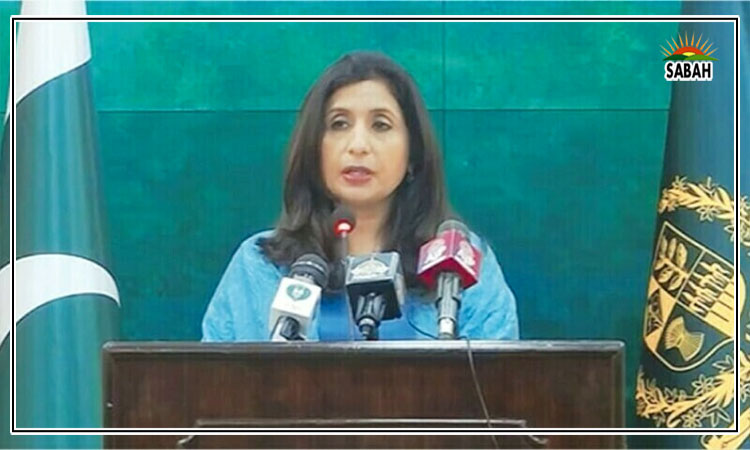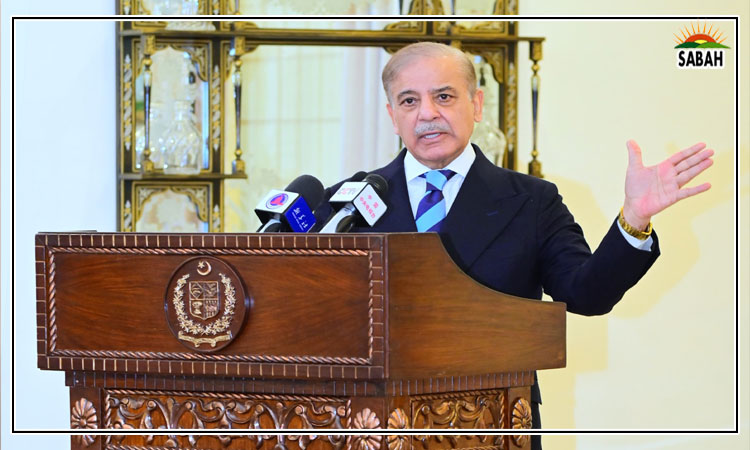How to keep Pakistan cool…Murtaza Talpur
Climate change is the latest talk of the town across the world. Earth urgently needs more afforestation and reforestation approaches to tackle the climate challenge. If each person across the world plants a tree daily, we can plant eight billion trees in just one day. Countries such as Pakistan, with alarmingly low forest cover, should take immediate steps and strategies to increase their forest cover.
Pakistan is a forest-poor country. This has resulted in extreme heatwaves across the country, with temperatures crossing 50-plus degrees Celsius in several cities. It is high time we understood the importance of plants and forests. Pakistan comprises 166 districts, including the capital territory, Gilgit-Baltistan (GB), and Azad Kashmir. The total land area of Pakistan is 881,913 square kilometres, which equals 217,925,448 (218 million) cultivated and non-cultivated acres. Currently, only 5.0 per cent of this land is forested, which translates to approximately 10,896,272 (10.9 million) acres of forest cover.
For preserving ecological balance and combating climate change, forests play a significant role. They work as carbon sinks, absorbing carbon dioxide from the atmosphere and releasing oxygen. Forests also help prevent soil erosion, preserve water resources, and provide habitat for diverse wildlife. Besides, they offer plentiful economic benefits through timber production, ecotourism, and non-timber forest products.
In Pakistan, the need for increased forest cover is particularly demanding because of the countrys vulnerability to climate change impacts such as sea intrusion, floods, torrential rains, droughts and extreme temperatures. Increasing forest cover can help reduce these effects, improve air quality, and contribute to the overall comfort of the population.
Pakistans percentage of forest area is disputed. According to estimates by the Food and Agriculture Organization (FAO), 2.2 per cent of the total land in Pakistan is covered by forests. The Pakistan Forest Institute estimates it to be 5.1 per cent. According to a survey by the Red Plus Programme in 2017, the forest cover of Pakistan is 5.7 per cent.
In line with the survey under the Red Plus Programme, Azad Jammu and Kashmir have the highest forest cover at 36.9 per cent, followed by Khyber Pakhtunkhwa (20.3 per cent), Islamabad (22.6 per cent) and erstwhile federally administered tribal areas (19.5 per cent). The World Wild Fund reports that between 2000 and 2010, Pakistan lost 43,000 hectares of land every year. According to the Sindh Forest Department, Sindh occupies 34.84 million acres of land; 3.426 million acres is under the control of the forest department.
According to the World Banks Green Pakistan Forests report, there are 1,232,150 acres (498,906 hectares) of natural forests in Balochistan, which is 1.4 per cent of the total area of the province and 11.1 per cent of the total forests of Pakistan. But according to data obtained from the Pakistan Bureau of Statistics, 4.06 per cent of the total area in Balochistan consists of forests. It depicts data variation and the dearth of accurate forest data in the country.
The forest cover of the country is far below the global average and poses serious threats to environmental sustainability. The key drivers of forest loss in Pakistan are: deforestation, illegal plotting, land conversion for agriculture, and increasing urbanization. To tackle these challenges, the government and various stakeholders must prioritize afforestation and reforestation initiatives. This includes planting new forests and restoring damaged forest areas to increase their environmental purposes and services.
The government should prepare a yearly goal of planting 100 acres of forest in each district. With 166 districts, this will add up to 16,600 acres of new forest each year in the country. Over five years, this will bring about 83,000 acres of further new forest shield cover. Normally, in reforestation, 1000 to 2000 trees per acre can be planted, but this can differ considerably based on local conditions and the environment.
It is important to note that local and indigenous trees, plants and vines should be encouraged. Besides, active participation from local communities ensures successful afforestation as well as reforestation. The government should provide capacity-building sessions to community members and raise awareness regarding the benefits and importance of forests. Community-based nurseries can also be established to supply saplings for planting.
Apart from that, schools and educational institutions should actively take part in afforestation and reforestation campaigns across the country. Students and teachers should participate in tree planting movements and realize the significance of forests all the way through environmental education programmes. This will inculcate a sense of responsibility and ownership among the younger generation regarding environmental management.
The government should plead with landowners to convert unutilized or damaged land into forest cover. Not only this, but the government may also specify tax breaks, financial incentives, and technical support to motivate afforestation and reforestation on private lands. Agroforestry practices, which integrate trees with crops and livestock, can also be encouraged.
To understand ecological conditions and the topography and cultural preferences of each area, a comprehensive assessment of current forest cover in each district should be conducted by the forest department, taking expertise from forest consultants or experts. The priority areas for afforestation should be identified based on ecological, social, and economic criteria. The assessment may provide baseline data for setting realistic targets and measuring progress.
Besides, the capacity of the forest department and other relevant agencies to implement afforestation projects should be strengthened. This includes staff training, improving infrastructure, and enhancing coordination and networking mechanisms. Each forest department at the district, provincial and national levels should build partnerships with research institutions, NGOs and civil society organizations for further expertise and resources.
The government should initiate pilot afforestation and reforestation projects in selected districts to determine the practicability and benefits of the proposed climate cooling plan. These pilot projects will serve as learning models for scaling up afforestation and reforestation drives throughout the country. Besides, there should be a national afforestation campaign to mobilize public participation and support. The campaign ought to utilize social networks, media and community organizations to enhance awareness and promote tree-planting initiatives.
To keep Pakistans climate cool, everyone needs to have a serious role — from politicians to people. To increase forest cover in Pakistan for biodiversity conservation, climate adaptation, and sustainable development, a well-thought-out and comprehensive afforestation-reforestation plan is important. It should be supported by the governments strong resolve.
Community participation and civil society representatives and NGOs involvement can play a vital role in enhancing forests in the country. Pakistan can also contribute to global climate goals and ensure a more resilient environment for future generations by planting trees and restoring forests.
Courtesy The News












